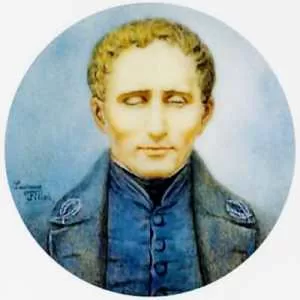Table of Contents
Louis Braille biography
January 4th marks World Braille Day, a global celebration of Louis Braille’s birthday. Born in 1809 in France, Braille’s ingenious invention has empowered blind individuals to read and write. Despite losing his sight at three, Braille devised a revolutionary system using six raised dots per letter, creating a simple yet sophisticated method that he introduced at the age of 15.
Braille’s invention transcended linguistic barriers, enhancing social, educational, and economic opportunities for millions worldwide. This article delves into the impact of Braille’s system and its evolution over time.
Before and After: Braille system history
During Braille’s childhood at the school for the blind, only three heavy books were available, each weighing over 100 pounds. The traditional method involved raised letters made by pressing paper against copper wire, making book production costly and hindering blind students from writing.

At around 12 years old, a former French army captain introduced Braille to a complex 12-dot and dash system known as “night writing,” used as a military secret code. Although Braille found it challenging to grasp the intricate system, the concept of raised dots for letters intrigued him. Inspired by the six dots on a die, Braille spent three years refining and simplifying the system that bears his name.
Braille expanded his system to include symbols for mathematics and music, significantly broadening its applicability.
Despite his contributions, Braille’s system was not initially taught at the Institute where he studied. Two years after his untimely death at 43, France officially recognized the Braille system. A century later, he received posthumous honors when his body was moved to the Pantheon in Paris.
FAQs:
Q: How did Louis Braille come up with the idea for his system?
Inspired by a military code involving raised dots and dashes, Braille simplified the concept, incorporating six raised dots per letter, influenced by the six dots on a die.
Q: What impact did Braille’s invention have on blind individuals?
Braille’s system revolutionized the lives of blind people, providing them with a means to read, write, and access educational and economic opportunities globally.
Q: What additional elements did Braille incorporate into his system?
Over time, Braille expanded his system to include symbols for mathematics and music, making it even more versatile.
Recommended External Link:
American Foundation for the Blind

